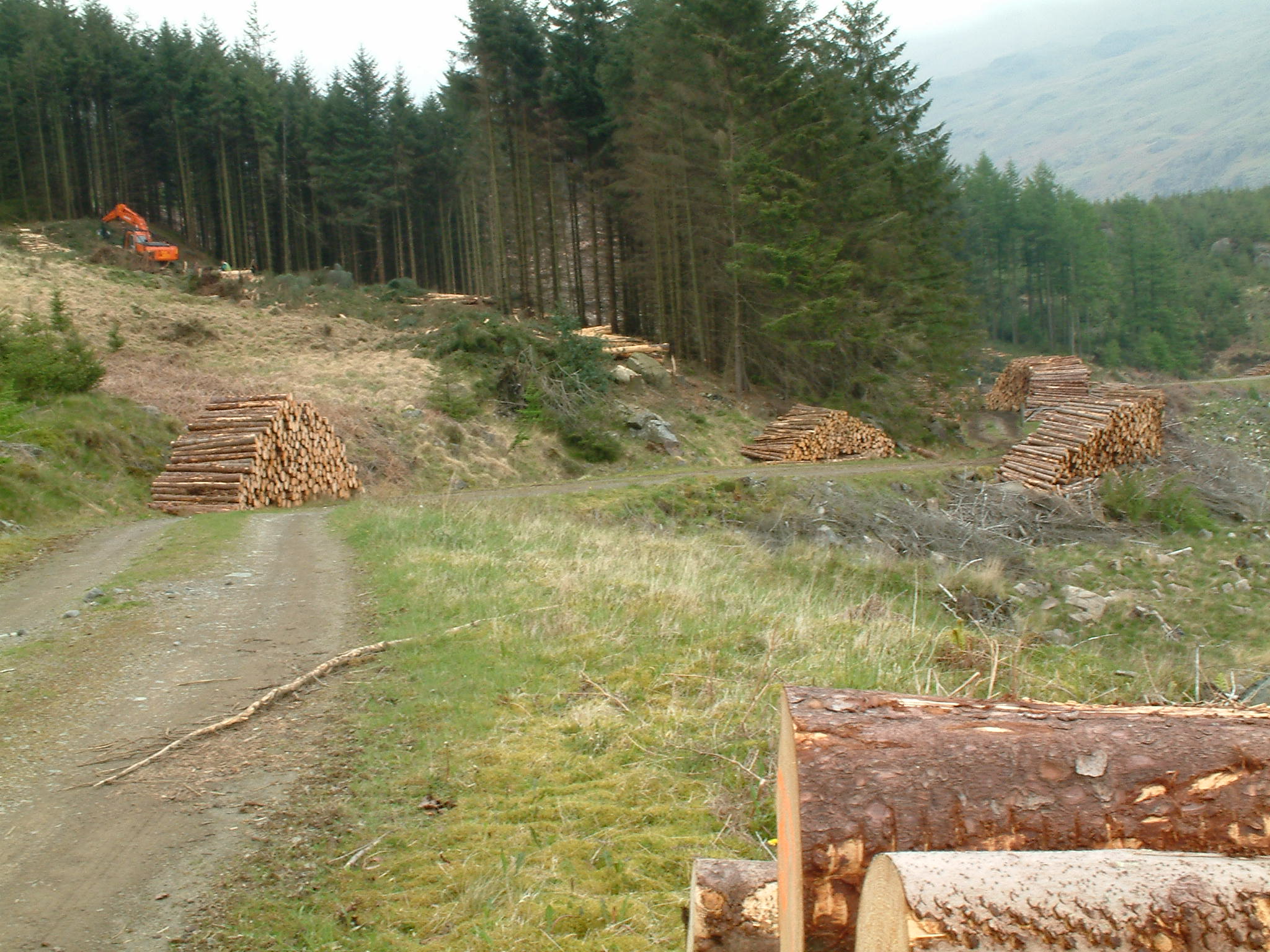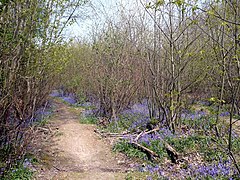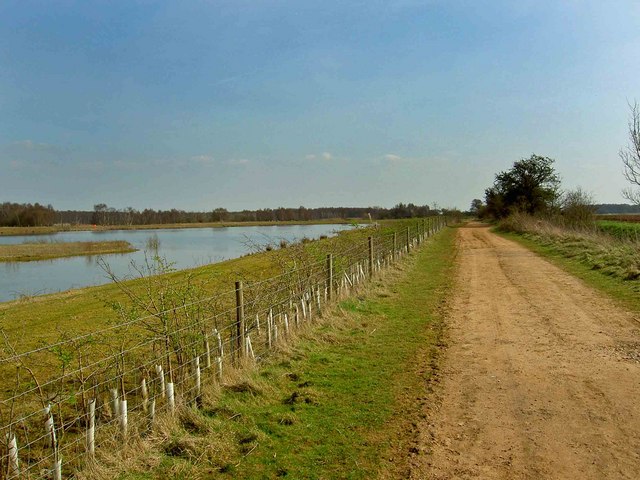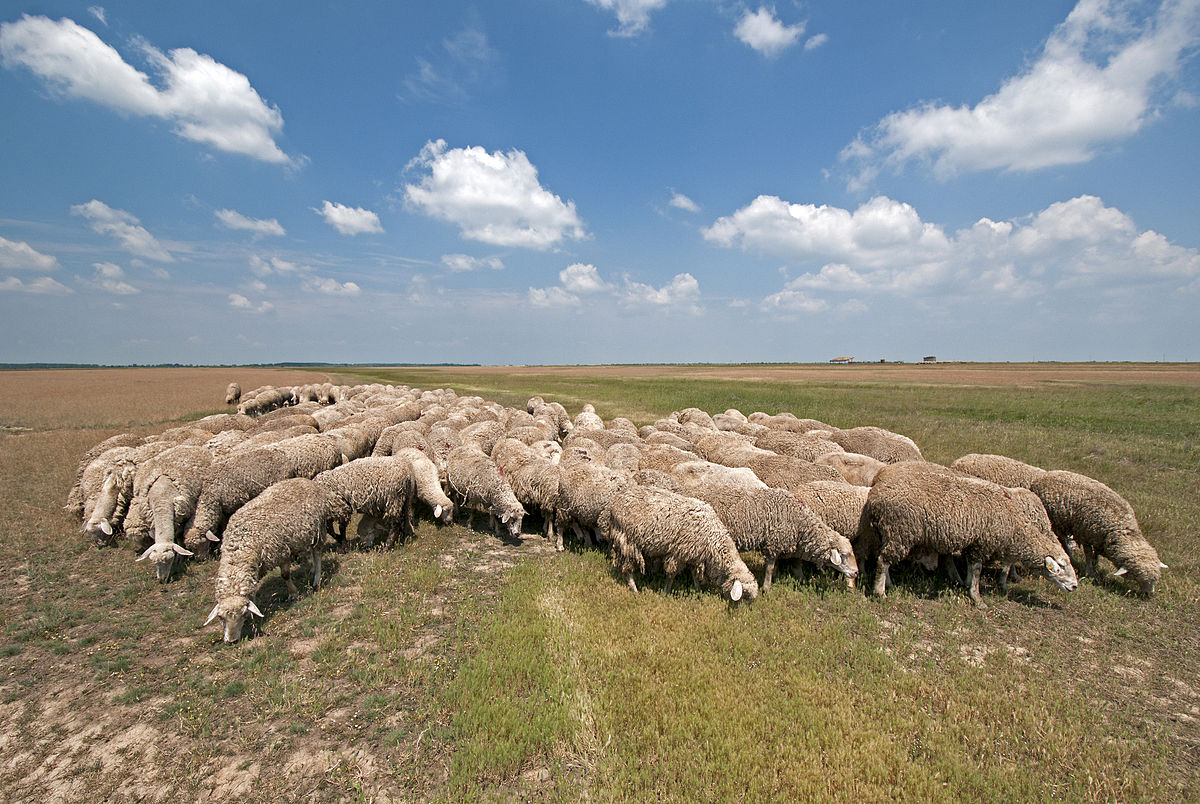The Centre for Alternative Technology (CAT) in Wales published a roadmap to a Zero Carbon Britain discussing how a future with the UK by around 2035 could exist with no net carbon emissions in order to counter climate change. The global picture with almost universal agreement in climate science suggests that the amount of carbon dioxide in the atmosphere already is heading towards an increase in global average temperatures of more than 2 degrees above pre-industrial temperatures. Of course, locally there can still be cold snaps and wintry conditions, but this does not mean climate change is not happening.
Doing nothing would mean greenhouse gases continue to rise and drive higher average temperature increases than 2 degrees. With instability of climate systems and tipping points, this represents a limit to global civilisation as we know it. A world with global average temperatures beyond 2 degrees rapidly decreases the ability to grow enough food for everyone. The sea will submerge large amounts of coastal lands and semi-arid regions will become deserts. Back in the Eocene geological period (6 million years ago) a similar rise in temperatures occurred over slower timescales which meant trees and animals moved poleward to keep pace with the changing climates. This time being much faster many ecosystems will not be able to keep pace and just die out.
The Zero Carbon Roadmap uses technologies that already exist. It is just a matter of using them and re-arranging a lot of life and economies around to fit into a new paradigm. The plan doesn’t actually eliminate all chemical processes that emit carbon dioxide but drastically reduces them. It attacks the 2 existing drivers of carbon emissions energy generation and energy use. Companies don’t just generate electricity and burn coal for the sake of it. There is an insatiable demand from all of us for electricity. A number of vital activities depend on it.
The first action is “powering up”, that is an enormous investment in solar and wind power whilst cutting out of all fossil fuel energy generation. It is also using battery storage, smart demand, biodiesel, biomass energy generation and using additional sources of renewable energy wherever they can be found. The second is “powering down” which is removing or sharply reducing the energy demand of pretty much everything we can. This involves changing lifestyle, diet, recycling, product design and supply chains across the board. The plan does not resort to nuclear power, nor any technologies not already in use. The current (2017) power generated is 2300TwH/yr with the Zero carbon version being 1300TwH/yr which is a cut of around a third. The power-down component reduces the energy demand by 60% from 1700TwH/yr to around 700TwH/yr.
I aim to take a look at what this vision might mean for the county of Worcestershire, which represents slightly less than 1 percent of the country in terms of both the land area and the population.
Power Up
Energy generation
The central idea to a carbon neutral energy system is that only renewable sources are used, mainly offshore wind, but also onshore wind, solar photovoltaic panels and ambient heat. Heat pumps remove the heat from the environment and are a much more efficient way of heating up water or houses than by burning stuff or by using electricity directly (like electric hobs or kettles do). Aiming for a Worcestershire total of 8060 MwH per year, ambient heat use would have to make 1183MwH per year, this basically means no more gas boilers and every building using ground or air source heat pumps.
Solar thermal heat gets the sun to warm up water in a roof or just use Passivhaus building design to get the most heat directly out of sunlight to provide most of the heating for a home. This is also part of the 1183MwHours.
Unlike coal or gas renewable sources of energy are diffuse. Worcestershire doesn’t have much power generating capacity at the moment because there are no local coal or gas fields. There is a waste incinerator in Hartlebury but there are several large site which use woodchip boilers for their own heat and power, such as the hospital and the Hive. There are other possible fuels for electrical power generation, some of which is also necessary for industry, such as miscanthus grass and vegetable matter from crops (husks, stems, stubble). Vegetative waste such as from food can be sent to an anaerobic digester which converts vegetable matter into compost and methane, the same gas used in your boiler. Such biomass would need to reach 2015MwH per year.
Wind power is best in coastal and mountain regions as the wind is stronger there, but neither of these descriptions apply to Worcestershire. There may be some sites with peculiar windy microclimates, but on the whole it unlikely to be very efficient running wind turbines in this county. Worcestershire’s share of the national target for onshore wind would be 670MW, which would be given by 67 giant wind turbines 180m high, the height of the London gherkin tower.
There are stretches of the Avon, Teme and Severn rivers which could be harnessed for in-stream hydro power. Damming the rivers blocks navigation for fish and for boats, plus erodes the river channels. Although we don’t have a coast, it would be fair to expect a proportion of the off-shore wind generation to provide.
 Solar thermal and solar PV will need to be fitted to buildings wherever there is no good reason not to, so it ought to be the default for any new roof. It is therefore best to orientate all new buildings to the south wherever possible and get the slope to roughly 45 degrees. Considering more than half of the national power supply will be from either wind or tidal and Worcestershire is not in a good position to provide those, we would have to make up some shortfall with solar. Nationally it is expected that by covering 20% of the roof surfaces we could provide 74TwH per year, so more than 20% of roof surface would need to be used. For Worcestershire this would be 648MwH per year Solar farms are popular at the moment, but this is not feasible long term because we need farmland for growing things, which can’t be done under solar panels. Covered car parks are a possible additional area. They are popular on the continent as they also shade cars on sunny days.
Solar thermal and solar PV will need to be fitted to buildings wherever there is no good reason not to, so it ought to be the default for any new roof. It is therefore best to orientate all new buildings to the south wherever possible and get the slope to roughly 45 degrees. Considering more than half of the national power supply will be from either wind or tidal and Worcestershire is not in a good position to provide those, we would have to make up some shortfall with solar. Nationally it is expected that by covering 20% of the roof surfaces we could provide 74TwH per year, so more than 20% of roof surface would need to be used. For Worcestershire this would be 648MwH per year Solar farms are popular at the moment, but this is not feasible long term because we need farmland for growing things, which can’t be done under solar panels. Covered car parks are a possible additional area. They are popular on the continent as they also shade cars on sunny days.
The actual target annual energy demand for Worcestershire is 7140MwH, though we accounted for 8060MwH. As energy generation is dependent on the environment there are peaks and troughs of supply, and there are peaks and troughs to demand, but if we put our minds to it, there are a number of power demands which could be moved to match supply. Obviously many are uncontrollable, but some could be such as charging electric cars. Many aspects of supply such as tidal are known years in advance, some can be predicted from the weather reasonably well a day or two in advance, but the total is unpredictable. In a free market, whoever can match their demand to the supply peaks could make huge savings. There is going to be some inefficiency as demand isn’t always going to match supply and even the most efficient storage and transmissions makes losses, so the generation has to be higher than the demand.
Energy and Fuel
Transport can work straight from electricity such as electric cars and bikes. Trolley buses and trams also used to be commonplace in many cities and in some places still are and are directly driven by electricity which can come from a carbon free source. Trucks and aircraft so far still mostly need liquid fuel, which can be derived from plants such as Miscanthus grass, short rotation coppiced wood and rapeseed, converted to synthetic fuel via the Fischer-Tropsch process. This process also uses hydrogen from water using electrolysis in periods when there is too much wind power. The production of such fuel is inefficient, losing lots of energy in the process, but it does allow the running of heavy freight trucks we’d otherwise not be able to do without burning fossil fuels. Some biogas from anaerobic digesters will also be used to run back-up power stations to make up temporary shortfalls due to the intermittency of wind, tidal and solar.
Power Down
Forestry
Forests serve multiple purposes, as in permaculture generally it is best to kill 2 or more birds with one stone, forgiving the non-vegan metaphor. Forests remove carbon dioxide from the air as they grow and build it into the trees and roots. Trees intercept the rain and let it percolate into the soil more slowly, they also transpire a lot straight back into the sky to form more clouds. This greatly reduces flooding. Whilst powering down the whole built environment and actions of society reduces the demand for energy and powering up renewable energy generation cuts out the carbon dioxide there is still a significant amount of effort and energy supply that still emits carbon dioxide. This is offset in part by forest growth. Unlike carbon offsets which are indirect and frequently not even real, forests will really draw in the carbon dioxide emitted by the country. Provided growth continues and and mature forests remain, the carbon will be locked into the soil for good.
The plan for a zero carbon Britain is to increase the amount of unharvested forest in the county to 145 sqkm. It is currently 20sqkm. There is currently 180sqkm harvested forest, usually pine which is used for toilet paper and matchsticks. This is to be increased to 290 sqkm, with a variety of trees for timber. Rather than clearfelling and reseeding, the harvesting needs to retain soil structure and wildlfe. When soil dies it decomposes and releases much of the carbon dioxide sequestered.
A forest sequesters carbon from the air as it grows and matures, but trees also breath carbon dioxide back into the atmosphere at night. Once the forest is mature the amount of fresh carbon drawn in matches that breathed out so it draws in no fresh carbon. This is likely to take 100 years so is not a method that works forever. The emissions offset by the new forests over this time are vital to get to net zero, but after this time technology will have to find new ways to balance emissions.
 Short rotation forestry is to be increased to 123sqkm and short rotation coppicing to 87sqkm. Many old areas of forest used to be managed by coppicing many years ago. Such wood is good for table legs, broom sticks and axe handles.
Short rotation forestry is to be increased to 123sqkm and short rotation coppicing to 87sqkm. Many old areas of forest used to be managed by coppicing many years ago. Such wood is good for table legs, broom sticks and axe handles.
A lot of wood and other fuels used as solid fuel, converted to make liquid or gas fuel to power industry, or just liquid fuel to power heavy transport.
Timber, straw and hemp
The products of forests and grassland grown especially for the purpose can be used for building houses that are well insulated. The necessary grassland will cover about 160sqkm. They also will not require so much in the way of energy intensive construction. Buildings containing wood can last for centuries, over which time the carbon taken from the atmosphere in the wood, straw or hemp’s growth is locked up. Care needs to be taken such that in the future when the wood needs to be replaced through damage or rot, or if the building itself is demolished, the wood or other products are stored below ground and not allowed to decompose as this would release the carbon dioxide back into the atmosphere.
Wood management in this way reduces the carbon dioxide in the atmosphere.
Restored Peatland
 The great advantage of peat is that the plant spagnum moss takes in carbon dioxide as it grows, but when it dies submerged beneath more moss and water, it does not decompose. As the peatland continues to grow over time, the peat just gets deeper and deeper for centuries. Really old peatland is over 20m deep. There is no real limit to how much peat you can get in a bog, and so there is no real limit to the amount of carbon dioxide you can sequester in peatland. Such a commitment in terms of land is a lot to ask, but peatland also cleanses water and soaks up floodwater, much reducing the peak discharge that floods Worcestershire after every series of storms crossing north Wales or Shropshire. If we were to follow the national average 87sqkm would need to be given over to restored peatland. It would all be a great addition to nature reserves, most likely with beavers and otters.
The great advantage of peat is that the plant spagnum moss takes in carbon dioxide as it grows, but when it dies submerged beneath more moss and water, it does not decompose. As the peatland continues to grow over time, the peat just gets deeper and deeper for centuries. Really old peatland is over 20m deep. There is no real limit to how much peat you can get in a bog, and so there is no real limit to the amount of carbon dioxide you can sequester in peatland. Such a commitment in terms of land is a lot to ask, but peatland also cleanses water and soaks up floodwater, much reducing the peak discharge that floods Worcestershire after every series of storms crossing north Wales or Shropshire. If we were to follow the national average 87sqkm would need to be given over to restored peatland. It would all be a great addition to nature reserves, most likely with beavers and otters.
Farming land use
At the current moment and leaving the EU in 2021, farms on average run at a small loss when considering the purely agricultural revenues and costs. When what used to be called set-aside, income from diversification and the direct subsidy payments are added, this turns into a profit. However this is only a simple picture of a very diverse farming community. Farms in the West Midlands made a small profit rather than a loss, out of agriculture.
The biggest change to make in order to move into a zero carbon Britain is a drastically reduced energy cost for the food growing system. Currently there is high proportion of red meat and dairy in the average diet. Despite the bucolic image of diary cows roaming a specious and largely empty countryside, each calorie of meat from cows, pigs and chickens needs those animals to first eat 9 calories of crops. Much of these crops are imported. A significant amount of land in Worcestershire is taken up in grazing, grassland or crops to be fed to livestock. There are 1740 square kilometres of land in the county of which 560 is for feeding to livestock. This needs to reduced to 203 square kilometres. This is not a drastic change of diet as the different meats, dairy and cheese can still be eaten, but much higher percentages of fruit and vegetables will need to be grown and eaten. This will be a much more healthy diet with plenty of other positives. The freed up land can also go to peat wetlands, commercial forestry with wood and specialised grasses for fuel.
The average land-use split across the country requires for land the size of Worcestershire to have 254 sq km for food growing, though currently 45 is used for horticulture (including fruit), and 385 sq km for cereals. This implies a lot of cereals are grown here for the rest of the country, which would presumably have to continue, to address the larger urban populations such as the Birmingham area so a plan based on pure averages for the country have to be flexed somewhat.
Transport
There is still a need for heavy freight, aircraft, industrial processes and backup gas power stations. Each uses liquid or gas hydrocarbon fuels, though these can be generated synthetically from woody biomass and electrolysed hydrogen. The fuels have a higher energy density than batteries and as transport needs to carry their own fuel this is a vital characteristic of the fuel, but these fuels are carbon neutral.
The balance of mode of travel changes and quantity of travel decreases by 13%. Journeys under a mile would tend to be walked, those up to 5 miles, which incidentally are 90% of all journeys, would tend to be cycled. Average occupancy of a car is currently 1.6 people whereas in a zero-carbon 2030 it would be 2 and 90% of all cars would be electric.
A major redesign of farming land-use, the food supply chain and food consumption habits is intended to make a large reduction in the need for transportation within the food supply chain.
Heating
The amount of energy used for heating is planned to half. This requires passivhaus design as standard on all new builds, a policy which could be introduced today, as well as retrofitting much of the existing building stock to improve insulation, draughts and use heat pumps and solar thermal. Both industrial and residential buildings would be advised to run their heating when energy was plentiful rather than when wanted, since buildings stay warm for a long time.
Industry
Combined heat and power (CHP) is much more effective in an industrial setting where the power and heat output of a power plant are both engineered to match the demands of the factory. In a lower energy environment designs of goods are likely to be for items that work better and last longer and can be repaired. The current design trends are to age rapidly, not be repaired and fall apart fairly quickly, but it took many years to design things this way. It is not a natural state and therefore can be changed.
Food
 Most of our farmland is either pasture to graze cattle and sheep, or to grow the feed for livestock. A large reduction of meat in the diet would result in a much greater amount of land growing food for us. The zero-carbon plan is to reduce land for grazing to a quarter of today, not completely remove it. Using the land to grow fruit, vegetables, pulses and starchy food like potatoes is both healthier and much more efficient in terms of calories per hectare. Doing this across the country could reduce food imports by a half, which is a large reduction in carbon emissions. Animals directly release methane into the atmosphere and the land-use releases nitrous oxide, both of which are greenhouse gases.
Most of our farmland is either pasture to graze cattle and sheep, or to grow the feed for livestock. A large reduction of meat in the diet would result in a much greater amount of land growing food for us. The zero-carbon plan is to reduce land for grazing to a quarter of today, not completely remove it. Using the land to grow fruit, vegetables, pulses and starchy food like potatoes is both healthier and much more efficient in terms of calories per hectare. Doing this across the country could reduce food imports by a half, which is a large reduction in carbon emissions. Animals directly release methane into the atmosphere and the land-use releases nitrous oxide, both of which are greenhouse gases.
Much of the rural land in the county is pasture and what is being used to grow crops is likely split evenly as food for us or food for livestock. The zero carbon plan is to increase the land used to grow food for us threefold from the current 6% to 15%. Grazing land for livestock is to be reduced from the current 60% to 12%. This leaves a large amount of land near rivers which farmers have to keep rescuing from being waterlogged or to maintain as meadows to instead leave as peatland. Peat sequesters lots of carbon in a sink and will go on doing so for centuries.
The plan is also to turn over a third (37%) of available land into forests, with two thirds of this area to be managed forest, for fuel, carpentry, coppicing and 8% unharvested, left to mature. This investment draws carbon into the wood and the soil long term, balancing the zero carbon budget. The forestry also results in jobs in felling, forest management and milling.

